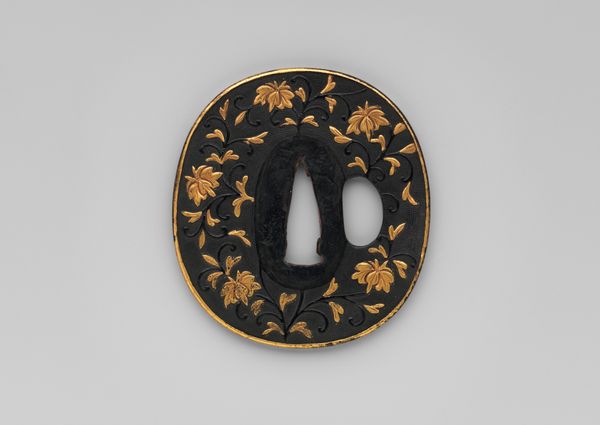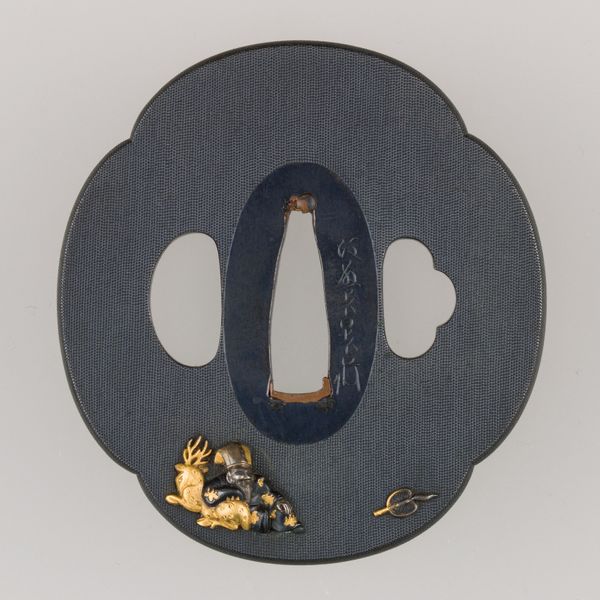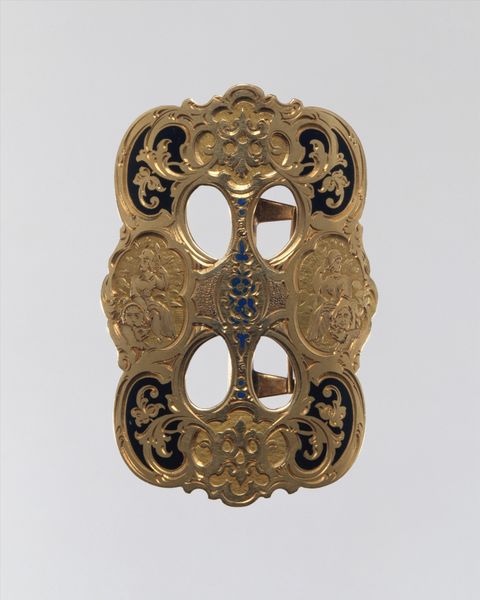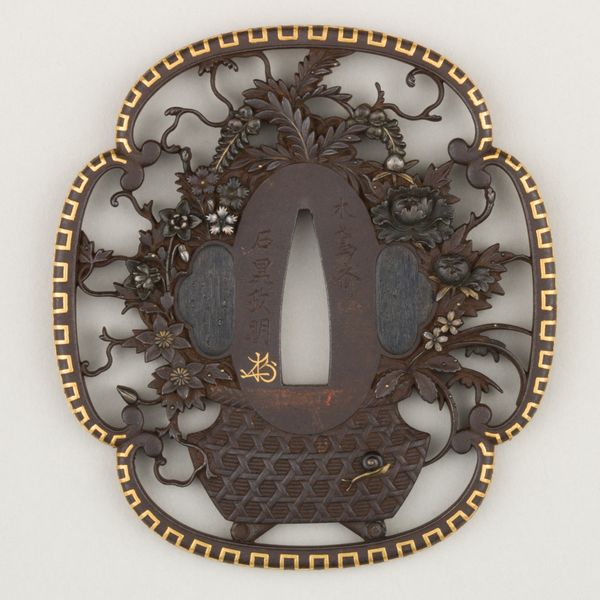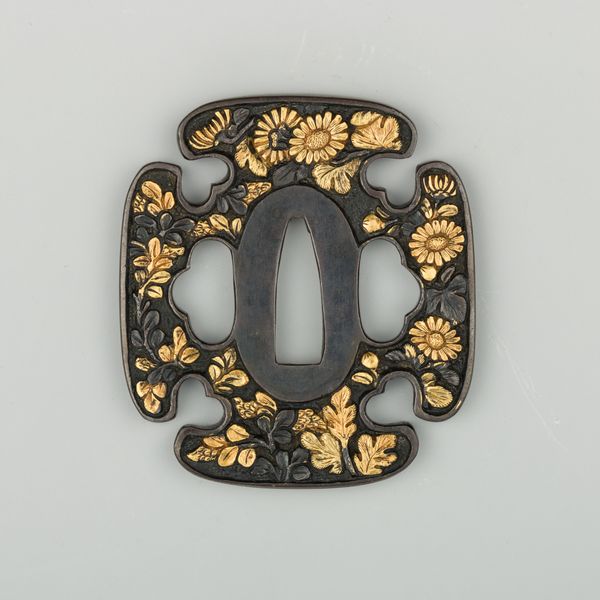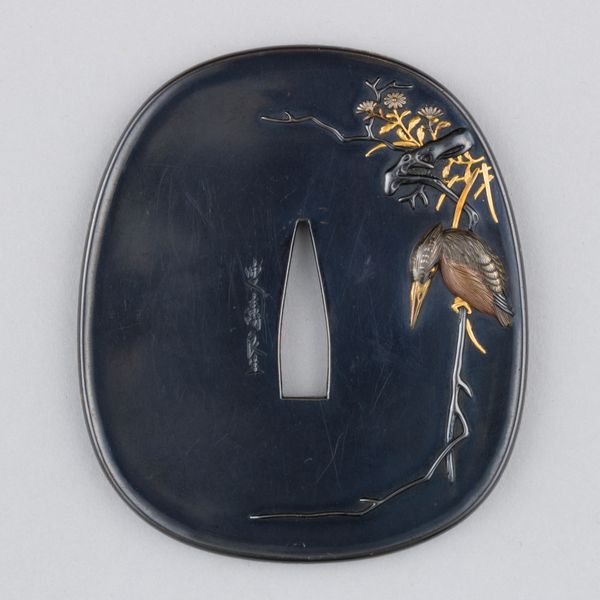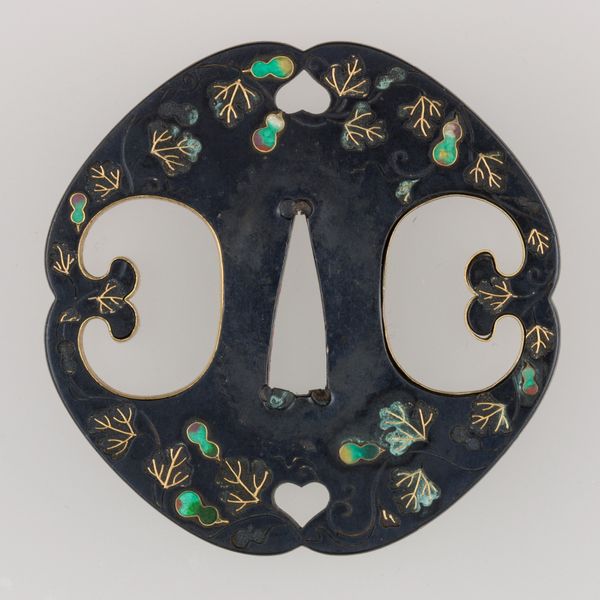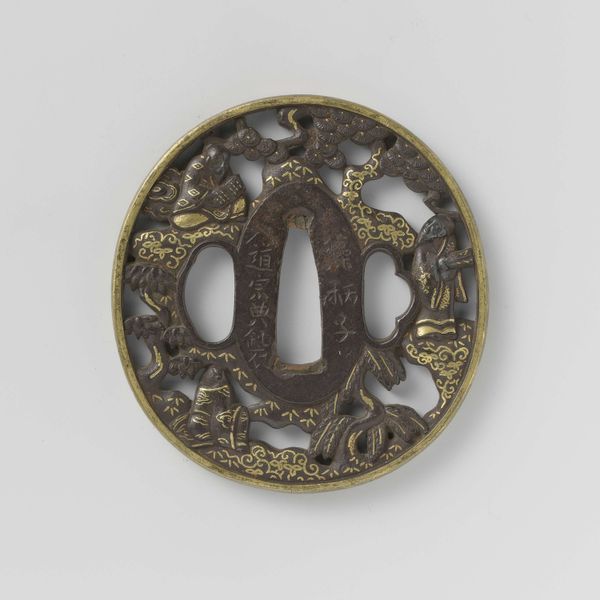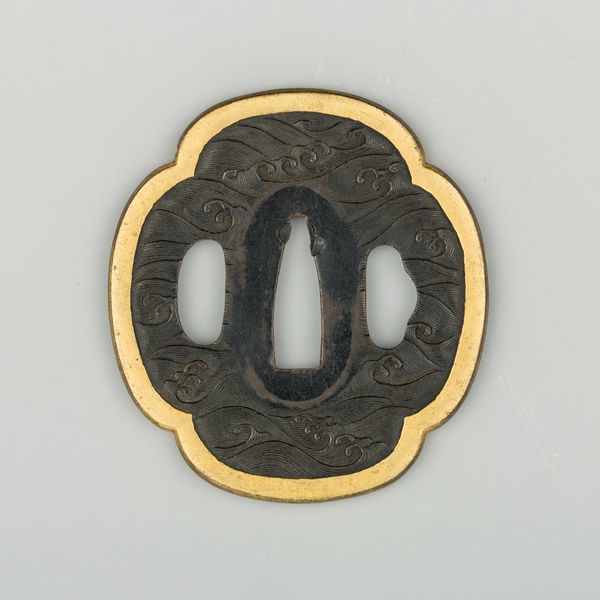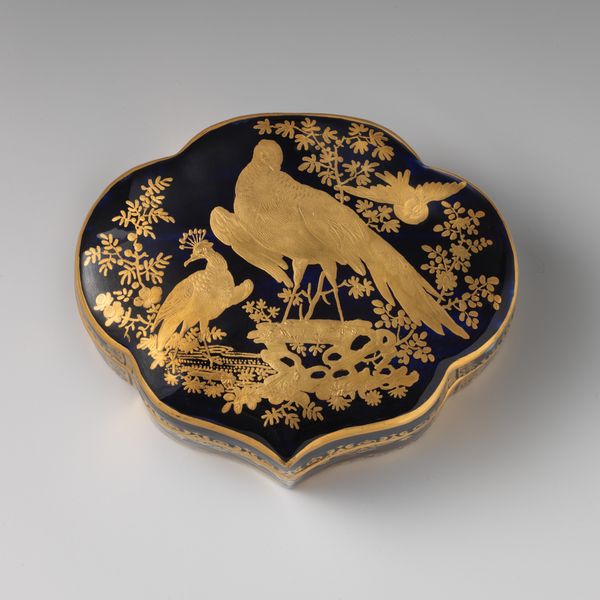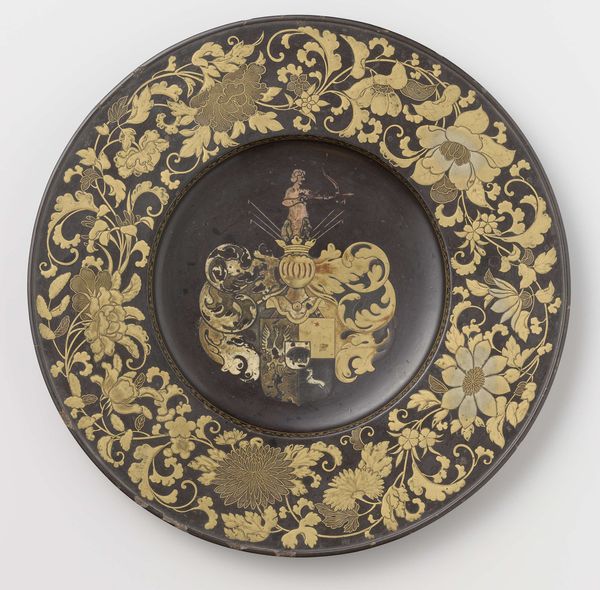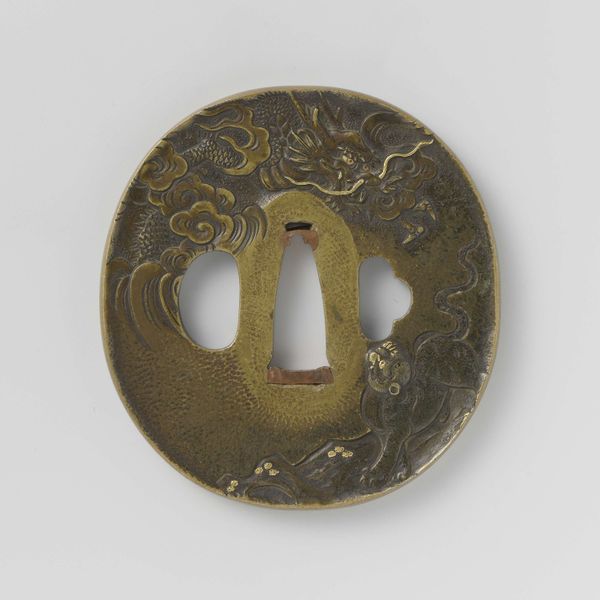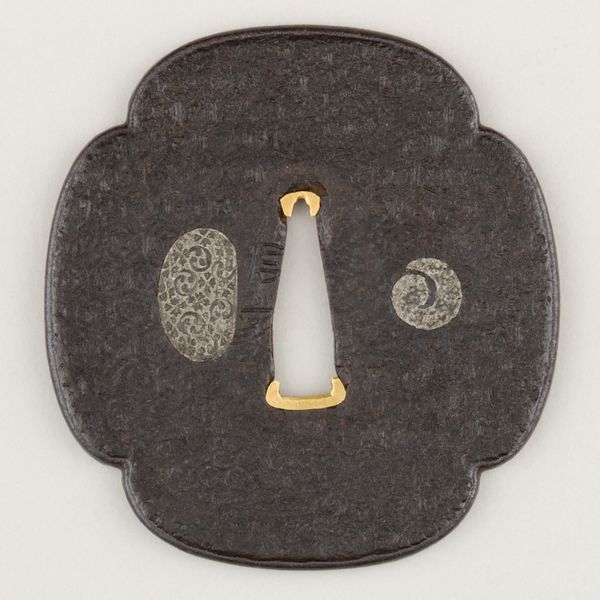
carving, metal, guilding
#
decorative element
#
carving
#
metal
#
asian-art
#
flower
#
round design
#
guilding
#
japan
#
orientalism
#
armor
#
decorative-art
#
sword
Dimensions: H. 2 9/16 in. (6.5 cm); W. 2 5/16 in. (5.9 cm); thickness 1/4 in. (0.6 cm); Wt. 3.2 oz. (90.7 g)
Copyright: Public Domain
Curator: Take a look at this Japanese Sword Guard or Tsuba, made by Omori Hidenaga in the 18th century. You can find this beautiful example of metalwork, carving and gilding at the Metropolitan Museum of Art. Editor: It’s lovely. I am immediately drawn to its delicate asymmetry. The polished metal has a quiet sophistication and the gold details give it a real luminosity. It seems so at odds with the purpose it served. Curator: Yes, its elegance certainly belies its martial function. But consider that the samurai class wielded tremendous power. These sword guards became important signifiers of social status and aesthetic sensibilities, reflecting larger societal structures. The detailed floral designs, combined with what seems to be insects along the guard, are a perfect microcosm of one’s refined taste. Editor: And a rejection of violence, perhaps? Even within such a hierarchical structure, a samurai might still identify with nature or aspire to some sort of harmony. In my experience, subversion of expectations can indicate rebellion in different contexts; and the artistic rejection of violent function within a lethal instrument does feel meaningful. Curator: Certainly, though its symbolism is probably multilayered, considering that floral and insect representations also figured significantly in Japanese poetry and theater. A more holistic perspective may provide additional context into what they mean. However, a rejection of its function cannot be denied given the nature of the work! Editor: It’s an interesting contrast: holding lethal force, but choosing refinement. As a reflection of identity, that reveals the push and pull of internal narratives and social expectations, which makes the work so dynamic and not simply a "decorative element." Curator: Absolutely. Considering all the aspects of this sword guard – material, construction, cultural role, and embedded politics – illuminates not only its significance, but its complexity within a rigid societal structure. Editor: Well said. I find myself reconsidering my initial judgment and seeing it not just as a beautiful object, but as an artifact rife with the tensions inherent in its historical context.
Comments
No comments
Be the first to comment and join the conversation on the ultimate creative platform.
